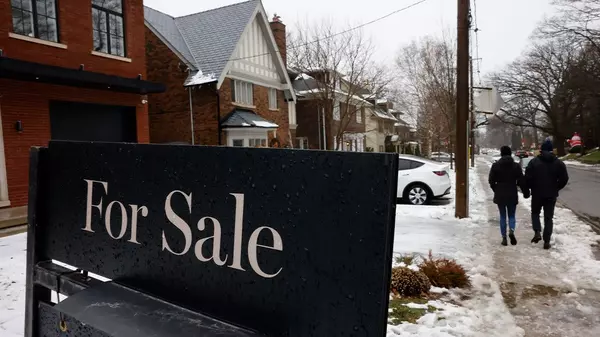Realtor.com: Almost Half of Homebuyers Who Took Out an Adjustable-Rate Mortgage Regret Doing So
Adjustable-rate mortgages, which offer homebuyers on a budget an initially low interest rate, are making a big comeback. But as financial markets churn and the economy remains shaky, some borrowers are regretting their decision to opt for what many see as a risky gamble.
About 43% of those who took out an ARM regretted it, according to a recent survey by U.S. News & World Report. ARMs work by offering a fixed mortgage interest rate, usually lower than a 30-year fixed-rate loan, for a period of several years. Then the rate resets, usually annually, according to what interest rates are doing at the time. The popular 5/1 ARM, for example, will have a fixed rate for five years that then resets every year thereafter based on the market.
That’s where folks can get themselves in trouble if they can’t afford their new mortgage payments when rates increase.
“ARMs can still be a great tool for the right buyer,” says Erika Giovanetti, a loans expert at U.S. News & World Report. “Especially now, they are a really good way for people to be able to afford those monthly payments, but people need to be aware of the exact terms they are agreeing to in the loan agreements. They also need to be able to have a plan in place to afford higher monthly payments.”
About 1,200 borrowers with an ARM participated in the survey taken between Dec. 14 and 20, 2022. Half of them said they opted for an ARM because the introductory rate was lower than those on fixed-rate mortgages. And slightly more than half said they did so because they plan to refinance or sell their home before the rate starts to adjust.
But it’s important to note that there are no guarantees that rates will be lower, or that borrowers will be able to find a buyer for their home, when that fixed rate period is over. Some 58% of the borrowers who spoke to U.S. News said they’d had “hesitations” about taking out an ARM for exactly that reason.
Still, ARMs can be a useful tool as long as borrowers fully understand their pros and cons, says Rocke Andrews, a Tucson-based mortgage broker with Lending Arizona.
Anyone who took out an ARM before the COVID-19 pandemic, for example, and did not take the opportunity to refinance while rates were at the lowest point in history, is right to have regrets, he says. But borrowers who used ARMs over the past year or so, when fixed rates surged to the highest in decades and home prices remained elevated, were simply being strategic.
And while no one has a crystal ball, it is a safe bet that interest rates will eventually fall. However, Realtor.com® is forecasting a 7.1% rate for the 30-year fixed by the end of 2023.
“One of my concerns is that there still is a big set of people who don’t plan on selling or refinancing before their reset period expires,” says Giovanetti. “ARMs take a lot more research and work, not just while you’re borrowing one, but throughout the course of the loan. … For the average homebuyer who doesn’t want to get involved with understanding the rules and the rate adjustment schedules of an ARM, maybe they should consider a [fixed-rate mortgage].”
ARMs are still far less popular than fixed-rate loans. Data from the Mortgage Bankers Association shows that last October, when the 30-year fixed-rate mortgage was at its highest since 2001, ARMs accounted for only 12.7% of all loan applications. In the last week of December, they made up 7.3% of the total.
Andrews notes that many borrowers are asking sellers and builders to buy down their mortgages rates rather than choosing an ARM. The most popular is the 2-1 buy-down, which offers a rate that is 2 percentage points below the current mortgage rate for the first year and then 1 percentage point below the rate in the second year. Then it resets to a permanent rate, which is what the rate was when the loan was taken out, for the remainder of the mortgage term. The seller typically pays for the buy-down.
That allows homeowners to take advantage of a monthly payment that’s more affordable now, with the certainty of knowing what the rate will be in the future. Of course, there’s always the option to refinance later if rates drop below what the borrower signed up for.
But the other important consideration, Andrews says, is that refinancing isn’t cheap. There might be periods when borrowers can get better deals on the closing costs, and it’s always crucial to shop around, starting with their current lender. He recommends they take into account their overall costs and not just how much they’re saving every month.
“ARMs aren’t a bad product,” says Andrews. “There’s just always that underlying worry.”
___
Watch: What Is Holistic Real Estate—and Could It Be the Key To Finding Your Next Home?
The post Almost Half of Homebuyers Who Took Out an Adjustable-Rate Mortgage Regret Doing So appeared first on Real Estate News & Insights | realtor.com®.
Categories
Recent Posts











